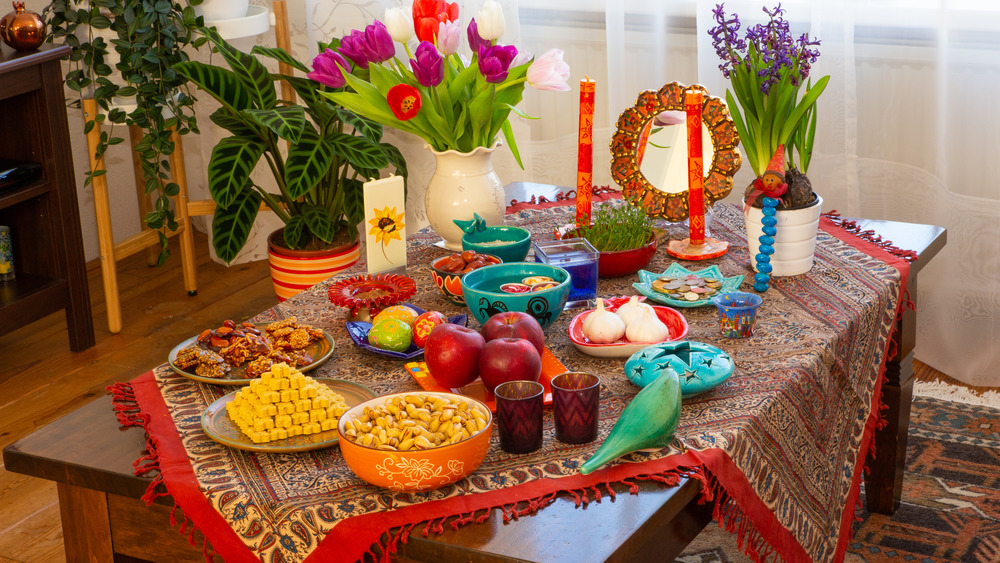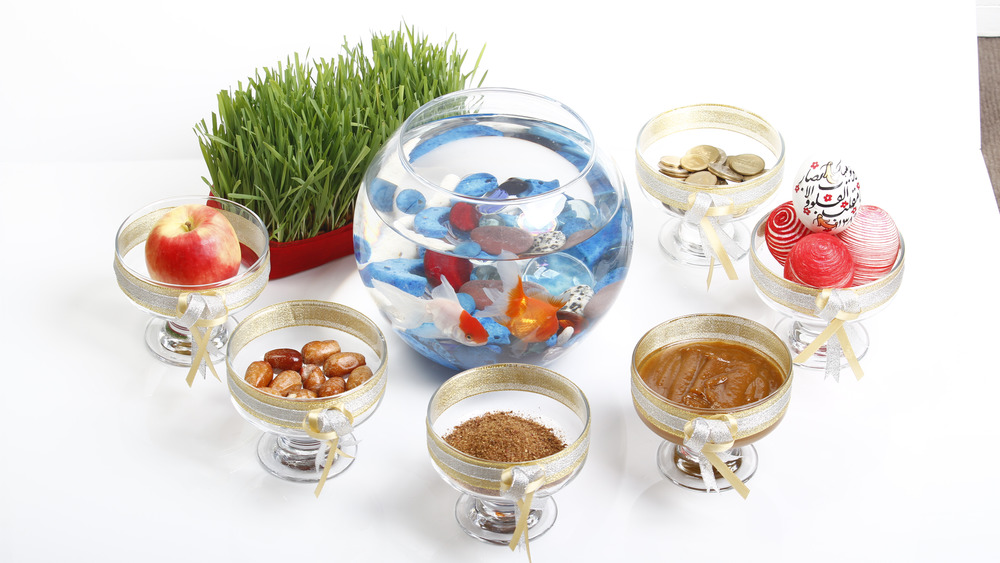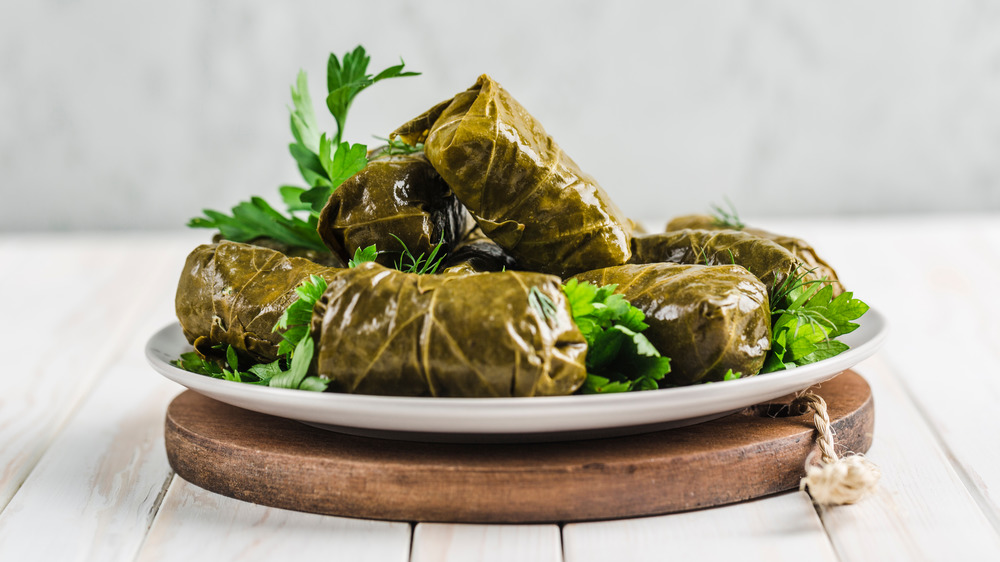What The Items On A Nowruz Haft Sin Table Represent
Happy New Year! What, again? Yes, not only did we get the chance for a fresh start on Jan. 1 and a do-over on Lunar New Year about six weeks later, but, as it turns out, some cultures very sensibly choose to start their calendar off with the Vernal Equinox, aka the first day of spring. According to CNN Travel, Nowruz is the Persian New Year, but it isn't celebrated only in Iran (the former Persia, more or less). Some 300 million people across the globe celebrate it, in countries including Afghanistan, Albania, India, Kazakhstan, Turkey, and Turkmenistan, as well as throughout the diaspora (including in the U.S., of course, since we never met a diaspora we didn't like).
As with any other major holiday (plus the minor ones, as well as just plain ordinary days), the best part is the food, and of course there are various traditional foods that are meant to be eaten and enjoyed. Certain other foods, however, are intended to serve a symbolic purpose, and these are the foods used to decorate the Nowruz Haft Sin table.
The seven symbolic Haft Sin foods
Every Haft Sin table must include seven items, each beginning with the Farsi letter "S": sabzeh, senjed, sib, seer, samanu, serkeh, and sumac. According to Vox, Sabzeh is a type of still-growing grass or sprout that is meant to symbolize renewal and rebirth. Senjed is dried fruit (lotus fruit, for preference) that stands for love, while sib are apples for health and beauty. Seer is garlic, meant to refer to self-care and medicine, while samanu, the only prepared food on the table, is a sweet pudding symbolizing fertility and wealth. Serkeh is vinegar, and this symbolizes the patience and wisdom that aging will (hopefully) bring. Sumac, the final item, is a Persian spice made out of crushed sour berries. It is red in color, symbolizing sunrise and a new day.
While all seven items are must-haves on every Haft Sin table, the table may also contain other items of particular significance to each family. Iranians will sometimes include a book of poetry by the beloved national bard Hafez, while a Qur'an may adorn the table of Muslims. Many people will include a goldfish as a symbol of new life — ironic in that many of these fish subsequently die an early death, either in captivity or because they are released into "the wild" where they're ill-equipped to survive. Even Iranian president Hassan Rouhani has spoken out against this practice, opting to use an orange instead of an orange-colored fish (via BBC News).
The not-so-symbolic but tasty traditional Nowruz treats
While the Haft Sin table items stay on the table, Nowruz also means a lot of family feasting. NPR mentions certain special dishes associated with the holiday including the Iranian sabzi polo mahi, a dish of smoked fish and herbed rice that's a favorite of actress Nazanin Boniadi, and karaf, a beef stew flavored with dried lime, mint, and celery and served over rice.
Whats4Eats mentions a number of other popular Nowruz dishes: shirin, or shekar polo, which is a type of sweet rice pilaf, dolmeh barg, or stuffed grape leaves, reshteh polo, a dish of lamb with noodles and rice, an herbed omelet called kookoo sabzi, and sabzi polo ba mahi,a bright green rice that gets its coloring from fresh herbs and is served alongside fried fish. Sweet treats galore also play a part in celebrations, including a pistachio and almond-studded rice pudding called doodh pak and a fried, syrup-dipped pastry called malai na khaja (via NDTV Food). The last day of Nowruz is celebrated (in areas where the weather permits) by day-long trips out to the countryside where people welcome in the spring and summer season with — what else? A picnic!


